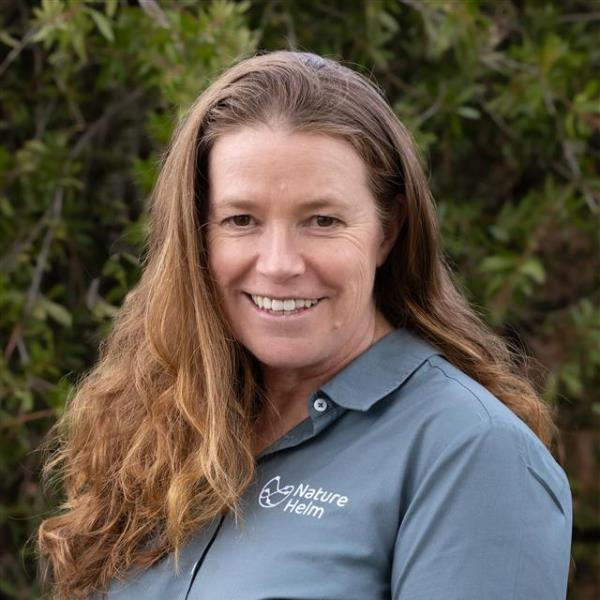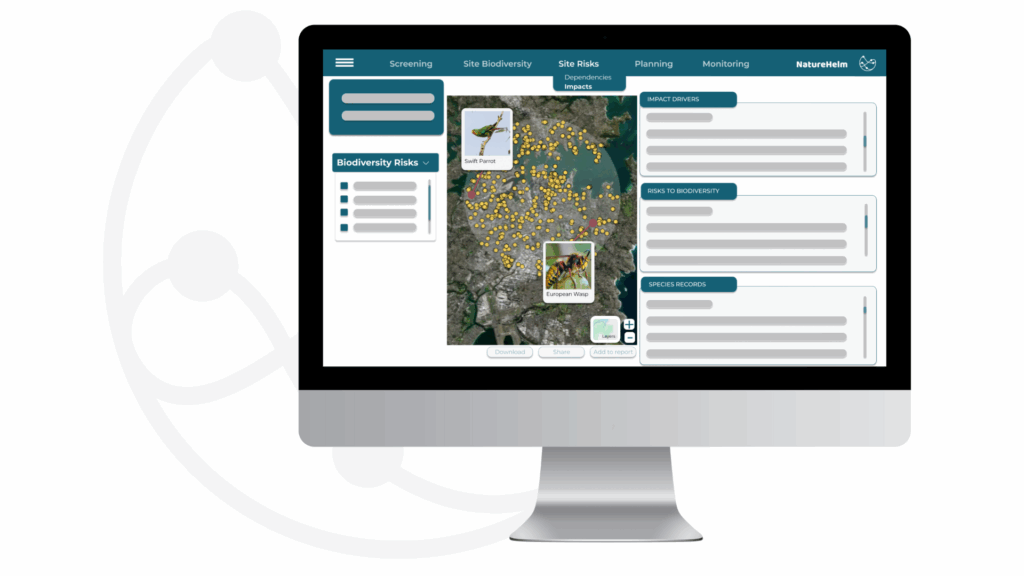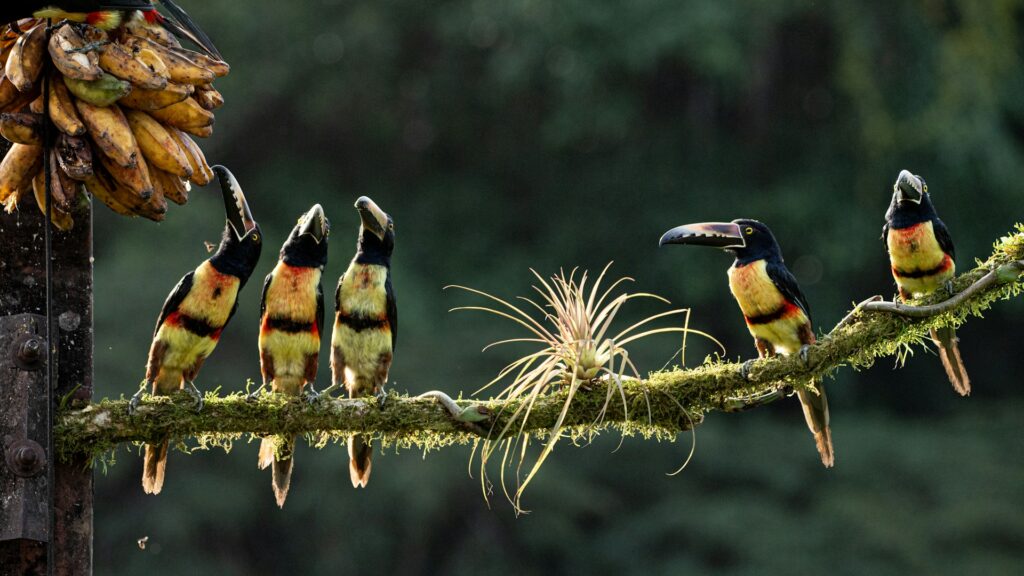Building Nature-Positive Futures with Data and Drones

Businesses need new tools to understand biodiversity. Ecologist-turned-entrepreneur Debbie Saunders explains how technology can drive meaningful change.
Dr. Debbie Saunders is a conservation ecologist and entrepreneur who has spent over 20 years working with threatened species and creating tools to protect them. She is the founder of Wildlife Drones, the world’s most advanced radio-tracking drone system, and the co-founder and CEO of NatureHelm, a biodiversity intelligence platform helping companies understand and act on their impact on ecosystems. In this conversation, she shares her journey from field biologist to tech entrepreneur, the challenges facing biodiversity today, and why business engagement is key to protecting nature.
For those who don’t know you, what sparked your passion for wildlife and how did it lead you into entrepreneurship?
I grew up in Sydney but always had a strong connection to the bush and native forests. That love of being outdoors shaped my studies in zoology and later my PhD on the critically endangered swift parrot. What we didn’t know about this species was staggering, we had no data on how it migrated, where it fed, or how it survived extreme Australian conditions like droughts, floods, and fires.
I searched for technology that could track such small birds but found nothing suitable. GPS and satellite tags were too heavy, and the only option was a tiny VHF tag that just beeped. The real challenge was finding those signals across vast landscapes. That’s when I turned to drones. By mounting sensors on drones, I could scan large areas quickly and detect signals that would take hours to locate on foot. What started as a research project became Wildlife Drones, launched in 2016, now used in eight countries from the Galápagos Islands to wetlands in Canada. I never imagined I would move from fieldwork into deep tech, but solving that research problem opened an entirely new path.
What made you go on to create NatureHelm?
Wildlife Drones solved a very specific tracking challenge, but as biodiversity loss became more urgent, I saw a broader gap. Companies everywhere were being asked to address their impact on nature, but there was no clear way to connect biodiversity data with business decisions. After the Global Biodiversity Framework was signed, it struck me that businesses would need practical tools, not just policy guidance, to act.
NatureHelm grew out of that realisation. It aggregates biodiversity data across company sites worldwide and translates it into clear, actionable insights. The aim is to help businesses move beyond abstract targets and see what species live where they operate, how those species contribute to ecosystems, and what steps they can take immediately. In short, it brings biodiversity into the everyday language of business.

You’ve been in this field for more than 20 years. How have biodiversity challenges changed over that time?
The shift has been profound. When I began as a consultant, threatened species were often seen as obstacles, something to avoid because they complicated projects. Today, rare species are increasingly recognised as assets, indicators that ecosystems are functioning. That change in perception is huge.
At the same time, the pressures have intensified. Climate change is altering ecosystems in unpredictable ways, and we’re seeing more regulation aimed at forcing action. Both top-down measures, like the EU’s Corporate Sustainability Reporting Directive, and bottom-up grassroots initiatives are crucial. We need them to meet in the middle if we’re going to make real progress.
What was your “aha” moment that pushed you to launch NatureHelm?
It came during a biodiversity accelerator in Singapore, which, to my knowledge, was the first of its kind. I remember sitting in a room listening to a presentation from the central bank about biodiversity and finance. As an ecologist who had spent years in the bush tracking birds, it was surreal to hear biodiversity discussed in those terms.
Later, talking with mentors from the finance world, I realised the demand for biodiversity data was only going to grow, and that I was uniquely positioned to meet it. That was the moment I saw the potential for NatureHelm to bridge ecology and business in a way that hadn’t been done before.

How do you explain NatureHelm to someone with no background in biodiversity or tech?
I usually start with water. Everyone uses it, but few people think of it as an ecosystem full of biodiversity. If the water is healthy, it supports fish, plants, and microorganisms, which in turn support us. The same is true for soil, forests, and pollinators. Every business depends on these systems, even if it doesn’t realise it.
NatureHelm helps companies see those connections. We screen their sites, identify species that are present, and link that information to their activities. For example, if you’re in agriculture, we highlight pollinators your crops depend on. If you’re in mining, we show which species might be impacted by your operations. Then we provide recommendations on what can be done, whether it’s protecting habitats, restoring degraded land, or adapting practices. It’s about turning complex ecological data into decisions that make sense at the business level.
Nature positivity has become a buzzword. How do you ensure companies move from ambition to action?
We take a stepwise approach. Some companies are just beginning and need a simple overview of biodiversity on their sites. Others already collect large amounts of data but don’t know how to interpret it. NatureHelm helps at both levels.
For beginners, we provide rapid screenings and clear insights about what matters most. For advanced users, we help them analyse trends over time, whether species are declining, whether ecosystems are functioning, and what that means for their supply chains. The goal is to move companies from high-level reporting to meaningful action that benefits both their business and biodiversity.

Do we need more regulation to accelerate this process?
Yes. Voluntary frameworks like the Taskforce on Nature-related Financial Disclosures are helpful, but they don’t guarantee change. Regulations like the CSRD in Europe are essential because they make biodiversity part of standard business reporting. Regulation doesn’t have to be punitive, it should help companies become more resilient and adaptable. Without it, progress will be too slow.
Can you share examples of impact from NatureHelm?
One farmer in Australia wanted to restore his land to grassy woodland. Through NatureHelm, he discovered a critically endangered bird living nearby, which opened new funding opportunities and even supported his plans for ecotourism.
In India, we’re working in a tiger corridor with regenerative cotton farmers and certification bodies. We help them analyse soil, water, and biodiversity data to compare regenerative practices with conventional ones. The results not only improve farming but also give global supply chain companies measurable evidence of impact. It’s a great example of connecting local action with global reporting needs.
What has it been like leading science-driven tech startups as a woman?
It’s been both challenging and empowering. In both Wildlife Drones and NatureHelm, we’ve had all-female boards at times, which is rare in deep tech. Leaving academia, where I faced difficult experiences, and moving into entrepreneurship gave me control over who I work with and how.
I didn’t know any women in business when I started, so I went out actively searching for mentors. One of the first women I met, Sylvia Tullock, is still on my board today. Her guidance has been invaluable. Surrounding myself with supportive, creative people has made all the difference.
What’s your dream for Nature Helm five or ten years from now?
Success would be when nature is fully integrated into business decisions everywhere. I want to see measurable positive change across at least 10 billion hectares globally. If we achieve that, we’ll know businesses aren’t just talking about biodiversity but actually sustaining it.
